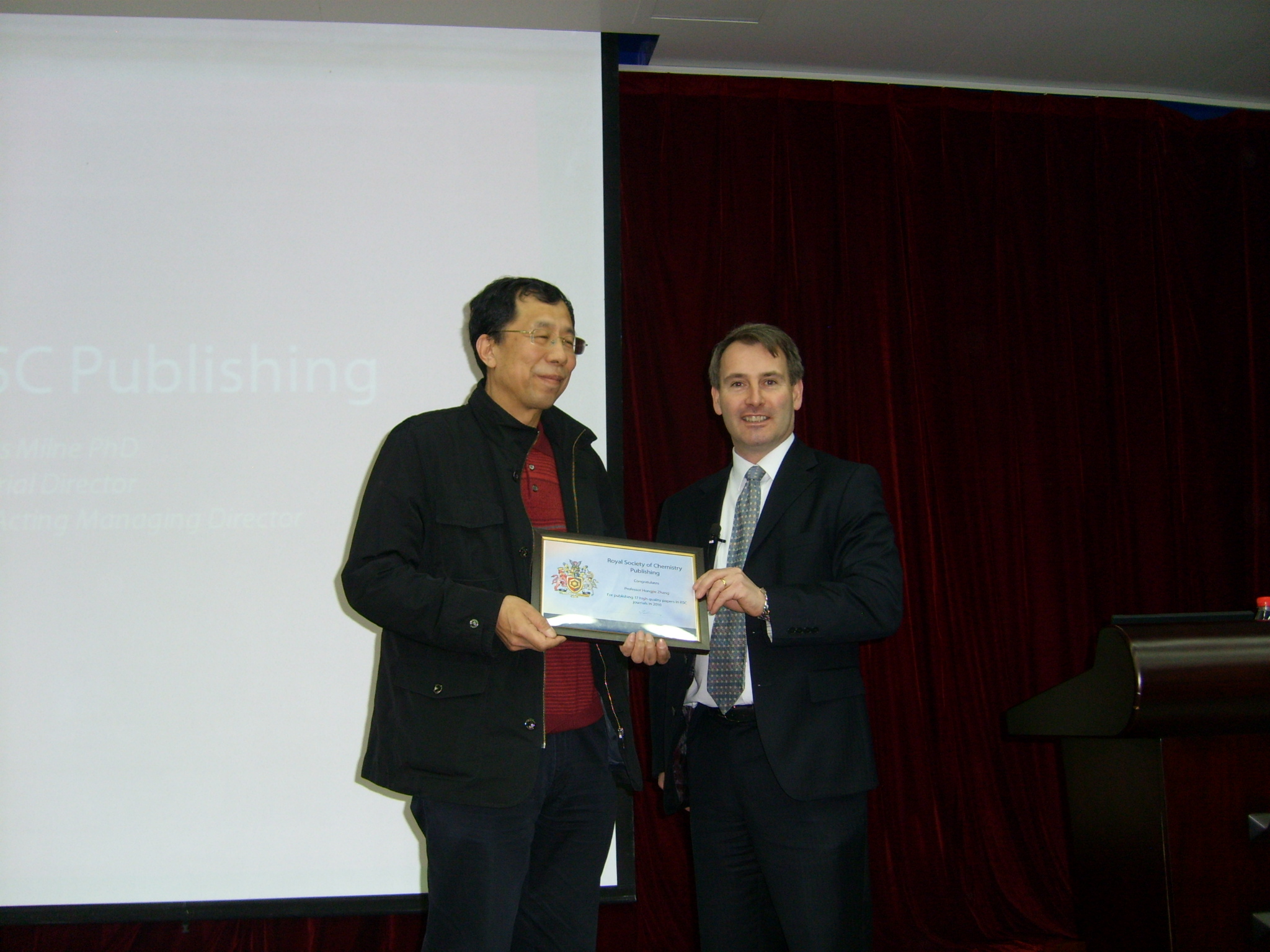
This week Dr James Milne (RSC Publishing) presented a certificate of achievement to Professor Hongjie Zhang, at Changchun Institute of Applied Chemistry.
Our friend Hongjie was recognised for his prolific published research over the last year. RSC has published 17 of Professor Zhang’s papers – making him the most successful author from China during the year and a number of these papers were published in Dalton Transactions.
Read Professor Zhang’s excellent work published in Dalton Transactions:
Tetracarboxylate-based Co(II), Ni(II) and Cu(II) three-dimensional coordination polymers: syntheses, structures and magnetic properties
Shengqun Su, Zhiyong Guo, Guanghua Li, Ruiping Deng, Shuyan Song, Chao Qin, Chengling Pan, Huadong Guo, Feng Cao, Song Wang and Hongjie Zhang
Dalton Trans., 2010, 39, 9123-9130
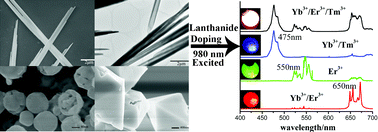 Lanthanide doped Y6O5F8/YF3 microcrystals: phase-tunable synthesis and bright white upconversion photoluminescence properties
Lanthanide doped Y6O5F8/YF3 microcrystals: phase-tunable synthesis and bright white upconversion photoluminescence properties
Song Wang, Ruiping Deng, Hailing Guo, Shuyan Song, Feng Cao, Xiyan Li, Shengqun Su and Hongjie Zhang
Dalton Trans., 2010, 39, 9153-9158
Cubic spinel In4SnS8: electrical transport properties and electrochemical hydrogen storage properties
Yongqian Lei, Guanhua Wang, Liang Zhou, Wen Hu, Shuyan Song, Weiqiang Fan and Hongjie Zhang
Dalton Trans., 2010, 39, 7021-7024
Fabrication and characterization of magnetic mesoporous silica nanospheres covalently bonded with europium complex
Jing Feng, Wei-Qiang Fan, Shu-Yan Song, Ying-Ning Yu, Rui-Ping Deng and Hong-Jie Zhang
Dalton Trans., 2010, 39, 5166-5171
Room temperature, template-free synthesis of BiOI hierarchical structures: Visible-light photocatalytic and electrochemical hydrogen storage properties
Yongqian Lei, Guanhua Wang, Shuyan Song, Weiqiang Fan, Min Pang, Jinkui Tang and Hongjie Zhang
Dalton Trans., 2010, 39, 3273-3278
Dr Milne and Dr D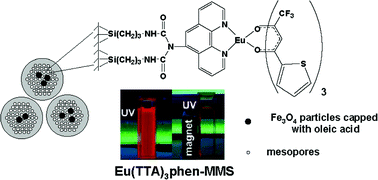 aping Zhang (RSC Publishing Editor) are on a tour of China where they will visit seven universities/institutes and four companies in Beijing, Changchun, Shanghai and Xiamen.
aping Zhang (RSC Publishing Editor) are on a tour of China where they will visit seven universities/institutes and four companies in Beijing, Changchun, Shanghai and Xiamen.
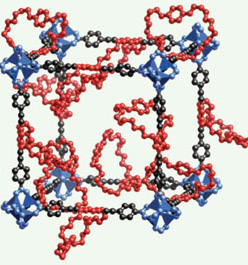 The field of coordination polymers and metal organic frameworks research has expanded rapidly in the last 15 years. Currently naming of the networks obtained and terminology practices are not consistent among research groups, sometimes causing confusion and unnecessary conflicts.
The field of coordination polymers and metal organic frameworks research has expanded rapidly in the last 15 years. Currently naming of the networks obtained and terminology practices are not consistent among research groups, sometimes causing confusion and unnecessary conflicts.












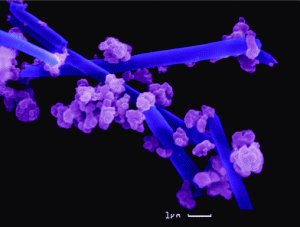 Preparation of metal “nanosalts” and their application in catalysis: heterogeneous and homogeneous pathways
Preparation of metal “nanosalts” and their application in catalysis: heterogeneous and homogeneous pathways
 Lanthanide doped Y6O5F8/YF3 microcrystals: phase-tunable synthesis and bright white upconversion photoluminescence properties
Lanthanide doped Y6O5F8/YF3 microcrystals: phase-tunable synthesis and bright white upconversion photoluminescence properties aping Zhang (RSC Publishing Editor) are on a tour of China where they will visit seven universities/institutes and four companies in Beijing, Changchun, Shanghai and Xiamen.
aping Zhang (RSC Publishing Editor) are on a tour of China where they will visit seven universities/institutes and four companies in Beijing, Changchun, Shanghai and Xiamen.![[CuII(Me6TREN)X][X] (X = Br- and Cl-)](https://blogs.rsc.org/dt/files/2011/03/c1dt10189g-ga.gif)
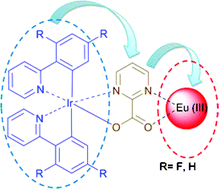
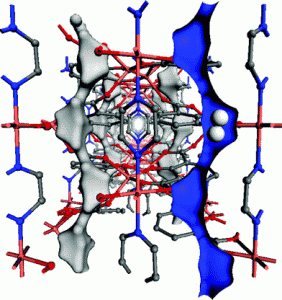
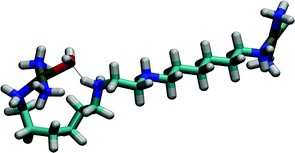
![Unique [CoII 6LnIII] 3d-4f metallic cages](https://blogs.rsc.org/dt/files/2011/03/c1dt10052a-ga-300x139.gif)